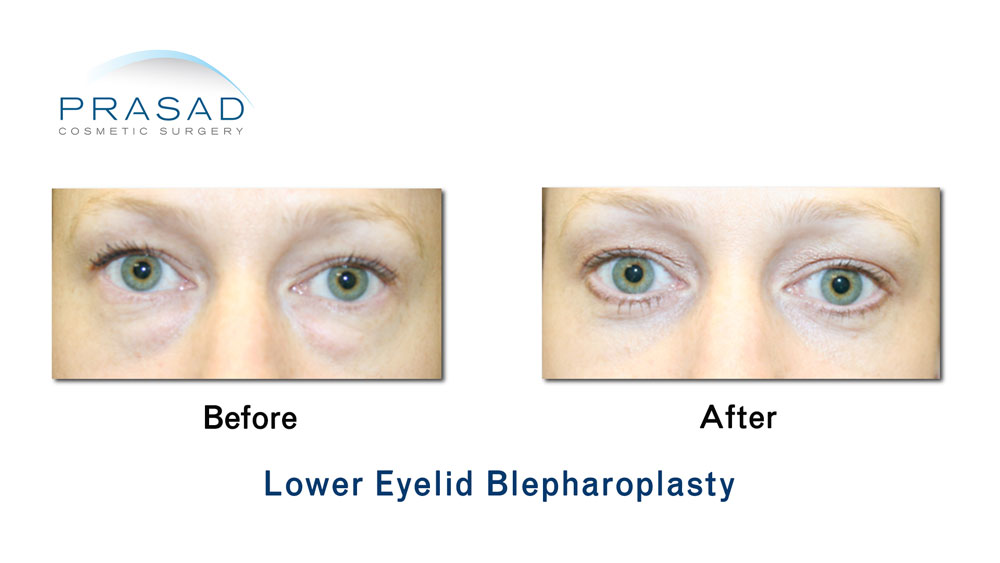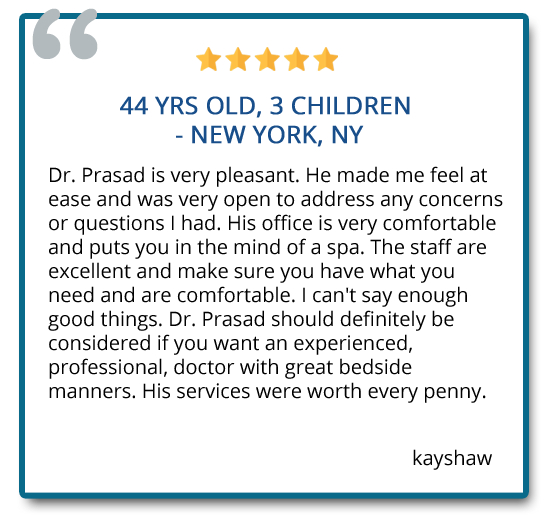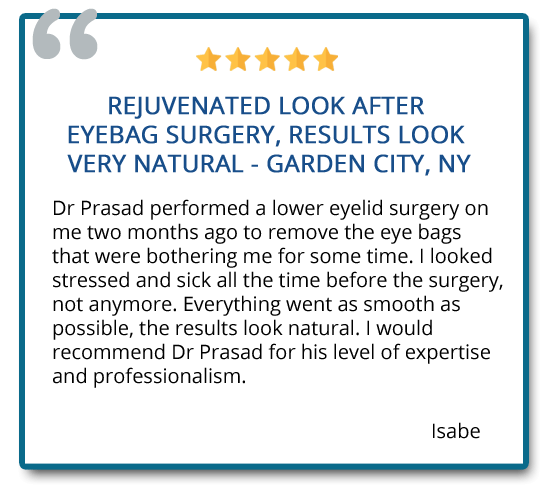Schedule Your Consultation with Dr. Prasad Here
- Home
- About Dr. Prasad
- Face & Eyes
Eyelifts
- Eyelid Surgery
- Eye lift Before and After Photos
- Asian Eyelid Surgery
- Upper Eyelid Surgery
- Upper Eyelid Hollow / Lower Brow Hollowing
- Under Eye Bag Surgery
- Eyelid Ptosis Surgery
- Transconjunctival Blepharoplasty
- Under Eye Fillers
- Eyelid Surgery Revision Specialist
- Thyroid Eye Disease
- Tear Trough Implants
- Eye Lift Questions and Answers
- Body
- Injectables
- Laser
- Hair Restoration
- Photos
- Hair Restoration Before and After Photos
- Eye lift Before and After Photos
- Upper Blepharoplasty Before and After
- Ptosis Surgery Before And After
- Facelift Before and After Photos
- Lip Enhancement Before and After Photos
- Under Eye Filler Before and After
- Blepharoplasty Before and After
- Lower Blepharoplasty Before and After Photos
- Eyelid Surgery Before and After
- Double Eyelid Surgery Before and After
- Contact Us
- Home
- About Dr. Prasad
- Face & Eyes
Eyelifts
- Eyelid Surgery
- Eye lift Before and After Photos
- Asian Eyelid Surgery
- Upper Eyelid Surgery
- Upper Eyelid Hollow / Lower Brow Hollowing
- Under Eye Bag Surgery
- Eyelid Ptosis Surgery
- Transconjunctival Blepharoplasty
- Under Eye Fillers
- Eyelid Surgery Revision Specialist
- Thyroid Eye Disease
- Tear Trough Implants
- Eye Lift Questions and Answers
- Body
- Injectables
- Laser
- Hair Restoration
- Photos
- Hair Restoration Before and After Photos
- Eye lift Before and After Photos
- Upper Blepharoplasty Before and After
- Ptosis Surgery Before And After
- Facelift Before and After Photos
- Lip Enhancement Before and After Photos
- Under Eye Filler Before and After
- Blepharoplasty Before and After
- Lower Blepharoplasty Before and After Photos
- Eyelid Surgery Before and After
- Double Eyelid Surgery Before and After
- Contact Us
Under Eye Bag Surgery
(Lower Blepharoplasty)
Patients come from around the world to Prasad Cosmetic Surgery seeking under eye bag surgery to improve the appearance of tired looking under eye bags. Eye bag surgery or lower blepharoplasty is performed to address under eye bags or puffy eyes.
Dr. Amiya Prasad, a leading oculofacial plastic surgeon, has performed eyelid surgery for more than 25 years, and is considered one of the best in his field. People often seek lower blepharoplasty because their friends and family tell them they look tired because they have puffy eyes, or sagging lower eyelids.
Eye Bag Surgery Before and After








What Causes Bags Under Eyes?
Puffy eyes/under eye bags are often misinterpreted as being caused by fatigue or allergies. The bags that are seen under the eyes that remain unrelated to sleep, or allergies, excessive salt intake, and sinus issues are due to lower eyelid fat prolapse. The fat padding that prolapses is referred to as orbital fat. This is based on the fact that the eye sits in a space called the orbit, and this space has fat in compartments to support and cushion the eyeball. Orbital fat can herniate forward, causing puffy under eye bags that are always visible. To improve the appearance of the bags under the eyes, the excess fat may be sculpted, and removed.
Loose Skin – Many people are concerned that after the under eye bags are removed from under the eyes, there will be loose skin. Depending on the support of the lower eyelid, loose skin can be addressed at the same time. Often, the skin that accommodates the eye bags/fat pockets is tightened after surgery by the orbicularis oculi muscle. The orbicularis oculi muscle contracts like a belt, and tightens loose skin.
Wrinkled Skin – Wrinkled or crepey lower eyelid skin is generally due to diminished skin quality, not excess skin quantity. It is common for surgeons to believe that wrinkled lower eyelid skin is due to excess skin quantity, which is often the case of upper eyelids, so they take the same approach by excising skin with surgery. This often leads to a skin shortage, which can cause lower eyelid retraction, ectropion (lower eyelid skin everting outward), entropion (eyelid skin everting inward), and the inability to fully close the eyes during sleep, or to distribute tear film to clean the eyes. Dr. Prasad avoids these complications by improving eyelid skin quality non-surgically with treatments like lasers to tighten, tone, and resurface lower skin; as well as injectables like platelet-rich plasma (PRP) or platelet rich fibrin (PRF) to improve skin quality, texture, and thickness.


Eyelid Support – People often referred to Dr. Prasad because of unrecognized problems with lower eyelid support. Properly restoring lower eyelid support requires several different specialized techniques. In addition, the support structures of the eyelid can be shaped in a way that can create a brighter appearance to the eyes.

Are You A Good Candidate for Lower Blepharoplasty?
You may be a candidate for under eye bag surgery if:
- You always looked tired, even with plenty of sleep
- Your under eye bags are present throughout the day
- You notice that applying makeup is becoming more difficult
- Your friends or family keep asking you if you’re tired or if you’re getting enough sleep
Dr. Prasad spends a lot of time with every patient in consultation. During your consultation at Prasad Cosmetic Surgery, a special blepharoplasty examination will be conducted. The goal is to properly classify your unique features based on gender, age, ethnic background, and skin condition. This will allow Dr Prasad to select the best approach for treating the under eye bags, and improving the skin of the lower eyelids.


How to Get Rid of Bags Under Eyes
To address the under eye bags, lower eyelid surgery, also known as lower blepharoplasty, is performed.
There are different surgical techniques a surgeon can use to treat puffiness in the lower eyelids, but the overall approach usually involves sculpting and removing prolapsed orbital fat. Depending on the technique used, surgery time varies.
The two most common eye bag surgery procedures:
Transcutaneous Blepharoplasty
– external incision in the lower eyelid to access the fat pockets
Most surgeons make an external incision just below the eyelashes when performing lower blepharoplasty, which is known as the transcutaneous incision, which means “through the skin”. A well placed incision can be virtually invisible when fully healed. Patients with darker skin may experience darker pigmentation (hyperpigmentation) along the incision line.
This approach often involves making incisions and flaps of the orbicularis oculi muscle. The delicate orbicularis oculi muscle is very important as it supports the lower eyelid like a hammock. If the integrity of the muscle is compromised, the shape of the eye can be altered.
This approach commonly used by general plastic surgeons who don’t specialize or have enough experience in eyelid surgery, often results in rounding of the lower eyelids, changing the natural shape of the eyes; scleral show where too much of the white of the eyes (the sclera) becomes visible; or pulling down of the lower eyelids called lower eyelid retraction. This type of surgery should be performed with an understanding of other eyelid procedures to preserve the natural shape of the eye.


Transconjunctival Blepharoplasty
– Incision is made in the Inside of the eyelid, behind the eyelid skin, in an anatomic feature called the conjunctiva to access the fat pockets
The transconjunctival approach to lower blepharoplasty requires knowledge of the delicate structures close to the eye, so it is mostly performed by cosmetic eyelid surgery specialists like Dr. Prasad. He uses the internal incision in the conjunctiva from inside the eyelid when he performs lower eyelid blepharoplasty. This approach has several benefits:
- No external incision so signs of surgery are unnoticeable. Even a close up eye exam will not reveal signs of surgery.
- The shape of the eye is typically better preserved as the orbicularis oculi muscle integrity is preserved.
- Minimal trauma to the fragile support network of the eyelid structure.


Many people who consider lower eyelid surgery also choose to have upper eyelid surgery.
What Type of Anesthesia Used During Lower Eyelid Blepharoplasty?
Oculoplastic surgeon Dr. Amiya Prasad developed his own approach to IV sedation combined with local anesthesia called LITE™ anesthesia. General anesthesia where a patient is paralyzed, and a tube is placed in the throat connected to a respirator is avoided. Local anesthesia allows patients to recover faster from all types of cosmetic surgery (with the exception of complex rhinoplasties/nose jobs) and go back to normal life quickly. Dr. Prasad’s patients have benefited with a comfortable and quick recovery with his unique anesthesia method.
Eye Bag Surgery Recovery
After eye bag surgery, minimal swelling and some bruising are typical, which diminishes anywhere from within a week to ten days. Most patients return to work about one week after surgery. You will receive specific instructions for your recovery, and typically have a follow up with Dr. Prasad in about one week. Read lower blepharoplasty recovery process


Can Under Eye Bags Be Removed Without Surgery?
The prolapsed orbital fat that causes eye bags cannot be removed without surgery, but some people with slight puffy bags, and hollowing of the cheek area, hyaluronic acid fillers like Restylane may be used to blend and camouflage the puffiness. During your consultation with Dr Prasad, he will advise you on the suitability of using fillers to treat your under eye bags. If there is only a slight amount of fat in the eye bags, under eye fillers can be used as a short-term alternative to surgery. Softer hyaluronic acid fillers such as Restylane or Juvederm that are appropriate for the lower eyelids last about a year, before they are safely metabolized by the body.
How to remove eye bags permanently?
There is no guarantee that the results of under eye bag surgery or lower blepharoplasty will be permanent, but the results are usually long-lasting, and can last decades. Since the effects of eye bag removal surgery can last for so long, the results are permanent for many people. Once prolapsed orbital fat is removed through lower blepharoplasty, the fat doesn’t return. However, it is possible for new orbital fat to prolapse, but for most people this doesn’t happen for decades, and for a good number it doesn’t happen again. The results of lower blepharoplasty for eye bags is likely to last among the longest of all cosmetic surgeries.
Is it Better to Use Laser for Under Eye Bag Removal?
Laser-assisted lower eyelid surgery can be done in place of using a scalpel, and a laser can be used to cauterize the internal incision in transconjunctival blepharoplasty, so sutures aren’t needed. Dr. Prasad can use either a scalpel, or a laser to sculpt the fat that causes puffy eye bags. He will discuss with you if laser-assisted lower blepharoplasty will provide advantages for your surgery. Non-surgical lasers used for skin resurfacing, skin tightening, and collagen stimulation are not appropriate treatments for eye bags since eye bags are caused by fat behind the skin, and not by the skin itself.
How much does it cost to remove eye bags?
The cost of eyelid surgery is based on surgeon’s fee, anesthesia, facility fees, and extensiveness of the surgery. Dr. Prasad performs his surgeries at his state-of-the-art surgical facilities to provide the highest level of safety for his patients. Financing options are available for qualified candidates.
Does lower blepharoplasty get rid of wrinkles?
Blepharoplasty mostly addresses the fat inside the lower eyelid, and in rare occasions, excess skin. The surgery will not make a significant improvement when dealing with the textural quality of the skin. For dynamic wrinkles around the eyes appearing when smiling/squinting, treatments such as Botox® are used to minimize the activity of the muscles that cause wrinkles. For the wrinkles that appear when the face is at rest, also known as static wrinkles, non-surgical treatments like fractional CO2 laser, PRP or are used to tighten the skin, increase collagen, and generally improve quality of the skin to help in the appearance of lines.
View blepharoplasty before and after photos
For more answers to frequently asked questions read lower eyelid surgery FAQs
Under Eye Bag Surgery in NYC and Long Island, New York
To schedule a consultation with the Board-certified Oculoplastic surgeon Dr. Prasad, contact us at our Manhattan office at (212) 265-8877 or Garden City Long Island office at (516) 742-4636. Patient financing options are available for qualified candidates.
Patient Reviews on Eye Bag Removal











